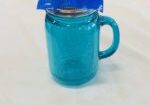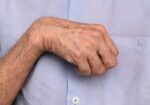THE SENSITIVITY AND SPECIFICITY OF ULTRASOUND FOR THE DIAGNOSIS OF CARPAL TUNNEL SYNDROME: A META-ANALYSIS
Filed under Diagnoses
Fowler, J. R., Gaughan J. P., & Ilyas, A.M. (2011). The sensitivity and specificity of ultrasound for the diagnosis of carpal tunnel syndrome: A meta-analysis. Clinical Orthopedics and Related Research, 469(4), 1089-1094.
The Skinny –The authors sought out to determine the sensitivity and specificity of ultrasound therapy for the diagnosis of carpal tunnel syndrome using three scenarios. 1.) using all studies regardless of reference standard 2.) using all studies with electrodiagnostic as the reference standards and 3.) using all studies with clinical diagnosis as the gold standard.
In the Weeds – The authors found a total of 19 articles that were included in the review. Remember, sensitivity indicates a true positive rate and specificity indicates a true-negative rate.
They found the sensitivity and specificity of ultrasound was 77.6% (71.6%-83.6%) and 86.8% (78.9%-94.8%), respectively.
They found the sensitivity and specificity of electrodiagnostic testing to be 80.2% (71.3-89.0) and 78.7% (66.4-91.1, respectively).
Bringing it Home– Ultrasound showed a higher specificity but electrodiagnostic had a slightly higher sensitivity. Although ultrasound may not replace electrodiagnostic testing as the most sensitive tool for diagnosing carpal tunnel, it may be a feasible alternative to electrodiagnostic testing as a first line confirmatory test.
Overall a very nicely done study however it was not without its limitation. There was a lack of heterogeneity among the studies reviewed. Both, ultrasound and electrodiagnostic testing it very operator dependent. The upside of ultrasound is it can be performed very quickly, it is often less expensive, and off course it is essentially pain-free.
–
More To Read
6 of our Favorite Adaptive Equipment Tools for CMC Osteoarthritis
Individuals struggling with osteoarthritis of the 1st CMC joint usually have difficulty with daily activities and it can become very frustrating. Everyday tasks such as cutting food, opening containers, and donning a button up shirt can become painful and slow. The largest contributor to the overall function of our hand is the thumb. If the…
Read MoreNeurolutions IpsiHand to Aide in Stroke Rehabilitation in Patients with Hemiparesis
Neurolutions IpsiHand to Aide in Stroke Rehabilitation in Patients with Hemiparesis Hemiparesis occurs in approximately 77% of new stroke cases and often persists into thechronic stage (Humphries et al., 2021). Recent innovation, such as brain-computer interfaces(BCIs), offer new opportunities for motor recovery even years after stroke. One such approach is the Neurolutions IpsiHand System, an…
Read MoreSplinting vs Stretching after a Stroke to treat Hand Spasticity
Splinting versus Stretching to improve hand function and reduce hand spasticity after stroke Reference: Ahmad Khan, M., & Singh, P. (2018, February). Effect of Hand Splinting versus Stretching Exercises for Reducing Spasticity and Improving Hand Function in Poststroke Hemiplegia: AComparative Interventional Study. Retrieved December 4, 2022, fromhttps://www.ijotonweb.org/article.asp?issn=0445 -7706;year=2018;volume=50;issue=4;spage=125;epage=129;aulast=Khan The Skinny: A comparative study by Khan…
Read MoreThe 4 Stages of Simple Wound Care in Hand Therapy
Wound care is messy. It can be intimidating and scary. With so many variations of wounds (for example, white skin around wound) and so many products out there it is hard to know what to use, when to use it, and how to use it. If you go to a wound care conference, you’ll spend most…
Read MoreSign-up to Get Updates Straight to Your Inbox!
Sign up with us and we will send you regular blog posts on everything hand therapy, notices every time we upload new videos and tutorials, along with handout, protocols, and other useful information.






